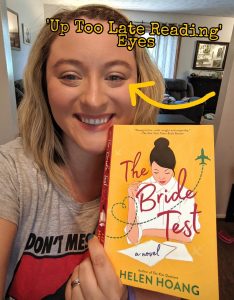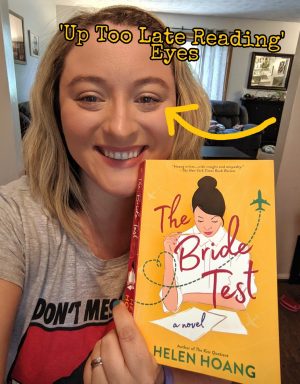I don’t have a lot of real-life friends who read romance. It’s a damn shame, I know. But I try, people. I believe, with all my romance-adoring heart, that romance is a powerful, transformative medium and I tell this to any unfortunate (super lucky?) soul who wanders across my path. So, on that note, if you’re not already reading romance, please consider The Bride Test by Helen Hoang.
The Bride Test is about Khai, a man with autism who believes he is broken and incapable of love, and Esme, a working-class single mother from Vietnam who is offered the opportunity to make a better life for herself and her family in the US. Helen Hoang, who is herself on the autism spectrum, writes their love story with compassion, sensitivity and grace. Without spoiling this book, I’d like to share some of the reasons I found this book to be so beautiful and compelling.
First, there’s Esme. In Esme we have a voice for too many people in the world who are almost always overlooked if not outright mistreated. Poor. Uneducated. Immigrant. Foreign. Other. But what Esme learns, and ultimately tries to show us, is that human dignity and value is innate. It’s ours by birthright. It is intrinsic to each one of us. Citizenship? Race? Class? Gender? Education level? None of those are what gives us our worth. None of those are what makes us worthy of joy and love. In the author’s note of this book, Hoang writes about how Esme perhaps isn’t the romance heroine we all expect to see and why she thought it was so valuable to bring this character to life…and she also shares her own mother’s incredible immigrant experience.
“She wasn’t impressive in any way you could see or measure, but she had that fire. She felt it. That was her worth. That was her value. She would fight for her loved ones. And she would fight for herself. Because she mattered. The fire inside her mattered.”
Helen Hoang, The Bride Test
And then there is the brilliant way that Hoang uses the language differences between Khai and Esme to mirror the communication challenges that can happen between neurotypical people and people with autism. Esme, who understands spoken English, speaks to Khai in Vietnamese. Khai, who understands spoken Vietnamese, often speaks to Esme in English. As their relationship develops, in order to to something as simple as talking to each other, they both are in a constant state of code-switching. And yet…it works. They connect. They fall in love. I thought this was such a poignant metaphor for the way that two people whose respective brains process the world in very differently ways can still relate and love.
Last but certainly not least? This book is hot. So, so hot. And, most impressive to me, the sexual relationship in this book becomes what it becomes because of communication. Because they talk to each other and they listen to each other.
This is a romance that I am proud for my daughters to see sitting on my bookshelves. So, once more, if you’re not already reading romance, please (PLEASE) check out The Bride Test. And while you’re at it, grab The Kiss Quotient too.
